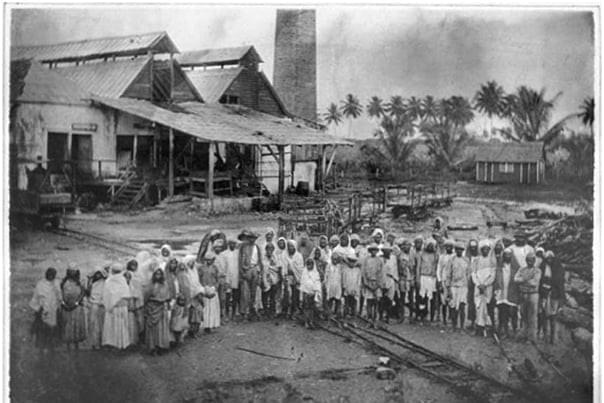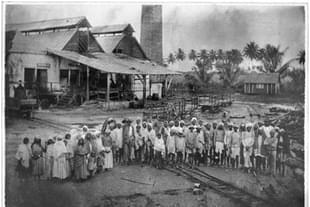Commentary
Shri Ramcharitmanas, Fiji, And Decolonisation
Aravindan Neelakandan
Apr 16, 2024, 07:59 PM | Updated Apr 17, 2024, 05:52 PM IST
Save & read from anywhere!
Bookmark stories for easy access on any device or the Swarajya app.


Bharat, the land, has a national soul. Swarajya – a term that comes to us right from the time of Veer Shivaji and in modern political discourse through Lokmanya Tilak, Maharishi Sri Aurobindo and Mahatma Gandhi, means more than just political independence. It is the expression of the soul-force of the nation in all national processes.
Towards that end the State is the tool of the Nation.
In that soul of the nation, Shri Ramcharitmanas, that epic poem in Awadhi holds an important place. It embodies one of the most potent nation-building processes of India.
It is a medieval text and as such contains the stamps of its times. But it is the transcendental to time, that is enshrined in it, which is important. Recent attempts to evaluate the entire Shri Ramcharitmanas solely on its temporal elements, and such an approach being labelled as 'subaltern' or 'progressive,' highlight the failure of our curriculum and polity to instil genuine cultural literacy.
But the work of Tulsidas has stood tall across time, strong and firm as a blessing to countless families of this nation for generations, to withstand trials and tribulations, calamities and catastrophes, invasions and persecutions, economic hardships and exodus overseas with extraordinary strength.
Of particular importance is how Shri Ramcharitmanas became the source of not just survival but also flourishing of Indian communities who were indentured abroad.
While a lot of academic studies of this contribution of Shri Ramcharitmanas exist, they seldom come into the public popular discourse in the media when the sacred text is discussed.
Here is an attempt to bring to the public conscience of Hindus, particularly in India, the role of Shri Ramcharitmanas, in helping our brethren fight the toughest situations in an unknown lands.
First the context.
Tamil poet Subramanya Bharati (1882-1921) wrote of the sufferings of Indian indentured labourers in Fiji islands, particularly of the harassment the women suffered. He titled it ‘In the Sugarcane Plantations.’:
In the sugar plantations Oh!
In the sugar plantations.
Their hands and legs tire and
they fall in the sugar plantations!
The hearts of Hindu women boil and
boil and their bodies shrivel.
Is there no way to remedy their sufferings,
as like yoked animals they toil
in the sugar plantations? (1)
For a damsel in distress even
devil shows mercy!
Oh Goddess hear their pain!
Will the tears of these helpless women
just mix with the soil there?
Unknown island amidst
Southern ocean and
a dark and lonely forest
our suffering women cry their hearts
in the sugar plantations. (2)
They will be thinking of their land?
Or of ever reaching back their homes?
Brimming with pain their hurt hearts
weep and weep with no end.
Oh Winds! You should have heard
the sad cries of their wrenching hearts!
Will you not bring us their laments
as they were carried off
as cargo in those ships of pain!
Even to cry they have now no strength,
in the sugar plantations.(3)
Their hearts are stormy as they are molested
Distressed tormented these women die
with none to care and with no refugee.
Orphaned they die alone in pain!
Can this injustice anymore prolong?
Hey Maha Kali! Ma Chamundi! Kaleeswari!
(I beseech you on behalf of our suffering womenfolk)
in the sugar plantations. (4)
It is said a little girl, standing by the side of Bharati as he read the poem, burst into tears hearing the suffering of women thousands of miles away.
Indeed men and women were captured by the agents of the British. The families were mostly torn asunder. The colonial authorities saw Indians as morally deficient human beings and hence whatever conflict that arose because of such depraved situations did not bother them much - as long as such conflicts did not interfere with the profits from their plantations.
It was in these circumstances that Shri Ramcharitmanas helped Indians stabilise, face the hardships and rise above them as a community.
In 1879, a group of indentured labourers brought to Fiji from Awadh, Bihar, and Bhojpuri-speaking areas also brought with them the Shri Ramcharitmanas. Anthropologist Vineeta Sinha ("Templetracks: Labour, Piety and Railway Construction in Asia", Berghahn, 2023) cites historian Brij Lal in her book:
The girmitiyas (indentured labourers) never completely lost touch with their cultural roots. As early as the 1890s, only a decade after the beginning of indentured emigration, the basic texts of popular Hinduism and folk culture were circulating in the main areas of Indian settlement in the sugar belts of Fiji.Temple Tracks (Asian Anthropologies, 2023, p. 262.
The role played by Shri Ramcharitmanas among the indentured labour community was at different levels of existence.
John D Kelley is an anthropologist studying Indian population in Fiji. He primarily does this within the Western framework, including Western postcolonial studies, the Gramscian school, and the study of the evolution of capitalism. Yet in his seminal work, A politics of virtue: Hinduism, sexuality, and countercolonial discourse in Fiji (University of Chicago Press, 1991) he writes:
(Hindus and Muslims) also participated in Ram Lilas, dramatic reenactments of the Ramayan narrative, which in indenture days was told as a tale of Ram's exile, climaxing with the burning of a giant effigy of Ravan symbolizing destruction of the evil in the world. In these rituals the Indians found their social identity in relations to God outside of, and in tension with, the colonial racist and economic definitions of the "coolies." The reading and hearing of texts became a noncoercive basis for an open community; within that framework, the Ramcharitmanas of Tulsi Das rose in social prominence through salient readings of its teachings. In the example of Ram, this version of the Ramayan epic provided a paradigm for the struggle of the good in an evil world; in the example of his wife Sita, a model of devoted chastity under pressure; and in the example of their enemy Ravan, a model of the delusions of powerful evil. All the rituals of the indenture period provided a basis for self-respect in antagonism with colonial moral measures. The Tulsi Das text became more: it became a weapon against indenture itself.'A Politics of Virtue', p.43
He further explains:
Ram was an avatar (incarnation) of Vishnu, come to worldly existence to fight evil and restore good order. He allowed himself to lose his social status, to be banished; he endured hardships and fought the evil of his world. When portrayed as Ram and Sita, the girmitiyas could not be blamed for their polluted status. When portrayed as Ram's enemy Ravan, the British could be shown to be deluded and evil, whatever their social and spiritual achievements.ibid., p.44
Prof. Manas Ray in a paper on the cultural life of Fiji Indians, explains the role played by Shri Ramcharitamanas in making the community endure the sufferings of the indentured period:
"The traditions of village India that survived were basically derived from bhakti–the devotional songs (bhajans) of such composers as Kabir, Mira and Sur Das. But over and above anything else what inspired their imagination was Tulsi’s Ramcharitmanas. Very early on, reciting, singing and enactment of the Ramayan was revived amongst the Indians of Fiji. This bound together a cultural community to brave the chains of bondage in the fissiparous environment of plantation capitalism where everyone was an individual unit of production and daily existence was measured by work hours. The Ramayan was shorn of deeper philosophical meanings. Its primary function was to serve emotional satisfaction and not individual spiritual enlightenment. The reasons for an overwhelming emotional identification with the epic is directly related to the predicament of an indentured diaspora. The central god character, Ram, was banished for 14 years. For Fiji Indians, it was for at least five years. Ram’s banishment was for no fault of his; similarly, it was not the fault of the Indians that they were extracted from their homeland and subjected to inhuman physical labour in this remote island. The triumphant ending of all ordeals provided a kind of moral strength to withstand the brutalities of indenture. If Ram could survive for 14 years, surely the Fiji Indians could do so for five years. The Ramayan thus was used to heal the wounds of indenture and provide a cultural and moral texture in the new settlement."
Today Fijiians of Indian origin, despite some setbacks, persecutions and challenges, are a relatively successful community.
In their success against odds like dehumanization, labor commodification, racial prejudices, colonial biases, and local antagonism, the role of Shri Ramcharitmanas in nurturing families to survive remains largely unrecognized by Indians.
Unlike with the faith that came with Western colonialism, there was no hyper-financed transnational missions operating on colonial surpluses to distribute medieval devotional literature. The copies the indentured labourers had, would likely have been worn out and poorly bound, and poorly printed. But even these along with the oral traditions and memories helped them to hold on to the Dharmic heart of India.
Yet this immense contribution of Tulsidas remains hidden in plain sight and is studied only by Western scholars or elite Indian scholars. It is not part of the mainstream conscience of Shri Ramcharitamanas. What percolates In the mainstream are a few verses, which were conditioned by the medieval times and then these verses are used to essentialise and demonise the text, a text that saved more families and more generations from exploitation and dehumanising, than all critics of Shri Ramcharitmanas put together could dream to achieve.
Tulsidas' poem helped Indians fight against one of history's most horrifying institutions of exploitation. The decolonisation project in modern India should ensure that the histories of such Dharmic struggles and triumphs are brought to the mainstream conscience.





